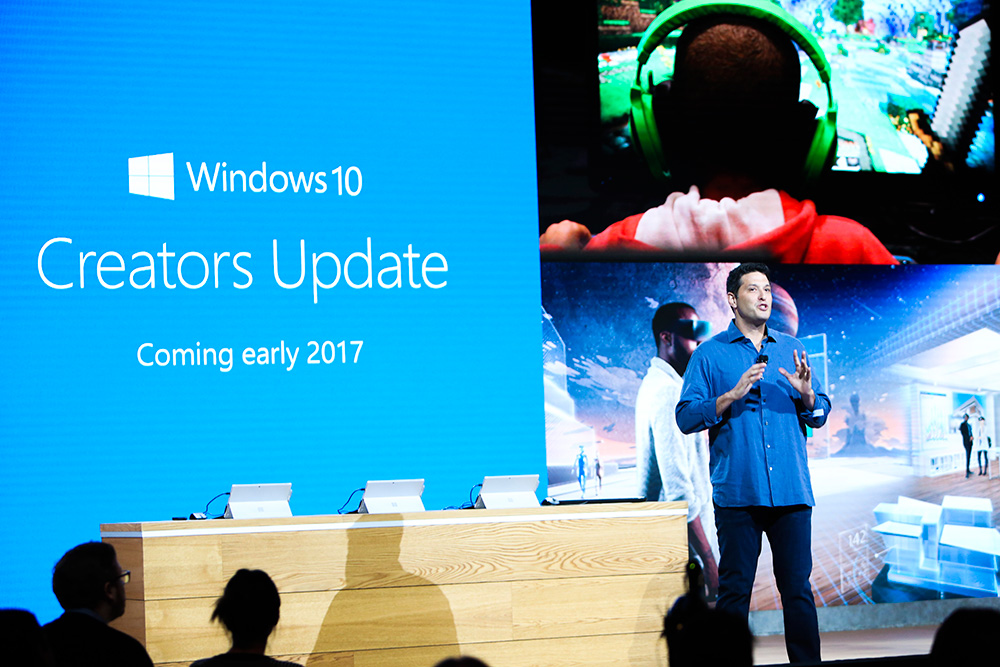 NEWS
NEWS
 NEWS
NEWS
 NEWS
NEWS
Several hardware manufacturers will soon be offering virtual reality headsets for Windows 10 starting at just $299, Microsoft Corp. announced today.
During its presentation for the upcoming Creators Update for Windows 10, Microsoft said that companies including Acer, Asus, Dell, Hewlett-Packard and Lenovo will be launching their own affordable Windows 10 VR headsets. Microsoft said that the new VR headsets will include “inside-out six degrees of freedom sensors,” meaning that they do not require external sensors such as those used by Oculus Rift or HTC Vive.
“Unlike every other virtual reality headset on the market today, this means there will be zero need for a separate room, zero need for a complicated setup,” Terry Myerson, executive vice president of Microsoft’s Windows and Devices Group, explained onstage during today’s event.
Aside from these sensors, Microsoft did not reveal any details about the actual hardware specifications for the new headsets. But at this price point, it seems likely that they will fall somewhere in the middle of the road in terms of the quality of the VR experience, and that could be a very good thing for both Microsoft and for consumers.
Today’s growing VR market has largely been divided between inexpensive mobile VR devices on the low end and pricey personal computer-based VR devices on the high end. Mobile VR devices such as the Samsung Gear VR and the new Google Daydream have an obvious price advantage, as both are priced at under $100. But their quality and processing capabilities are comparatively low, and they can handle only simple VR programs with low system requirements.
Meanwhile, PC VR devices like the Oculus Rift and HTC Vive can handle all of the latest and greatest VR programs with incredible fidelity and smooth frame rates, but these devices cost $599 and $799, respectively.
The new, cheaper VR headsets announced by Microsoft today could fall into a Goldilocks zone between being both powerful and affordable. But the current VR craze is still new, and it is difficult to predict whether midrange VR devices will hit a sweet spot in the market, or if they will instead be too expensive for some and not powerful enough for others.
One market in which these headsets could potentially excel is the enterprise, which is increasingly turning to VR for a wide range of uses, from training employees to designing new BMWs. In these sorts of applications, mobile VR can often be too limiting, but at the same time, the bleeding-edge graphic fidelity of the Rift or Vive might be unnecessary.
Support our mission to keep content open and free by engaging with theCUBE community. Join theCUBE’s Alumni Trust Network, where technology leaders connect, share intelligence and create opportunities.
Founded by tech visionaries John Furrier and Dave Vellante, SiliconANGLE Media has built a dynamic ecosystem of industry-leading digital media brands that reach 15+ million elite tech professionals. Our new proprietary theCUBE AI Video Cloud is breaking ground in audience interaction, leveraging theCUBEai.com neural network to help technology companies make data-driven decisions and stay at the forefront of industry conversations.